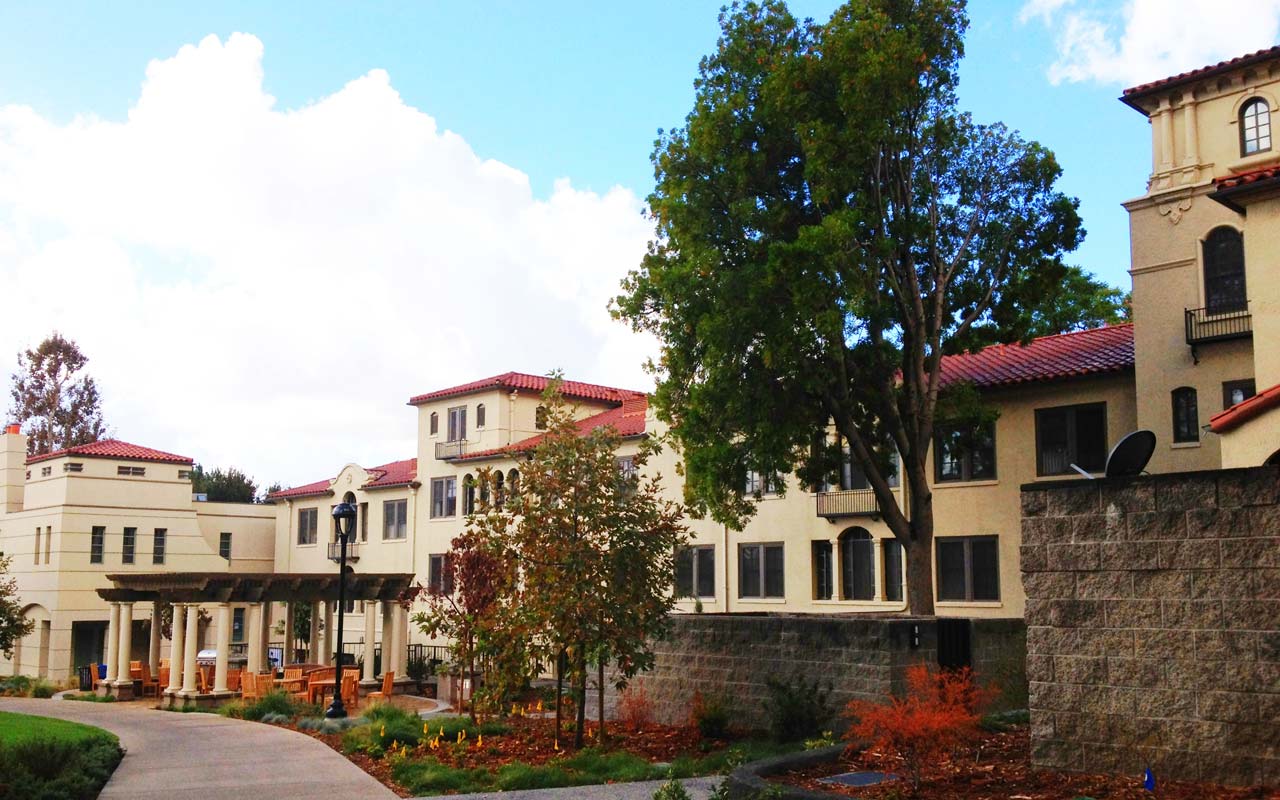10 Best College Values, 2015
For the first time, Kiplinger’s presents a combined ranking of best values in private and public colleges.

For the first time, Kiplinger’s presents a combined ranking of best values in private and public colleges. As always, our rankings reward schools that meet our definition of value – a high-quality education at an affordable price. Among the factors that we consider: high four-year graduation rates, low student-faculty ratios, reasonable price tags, generous need-based aid for students who qualify and low student debt. Our combined list compares private universities, liberal arts colleges and public colleges (based on out-of-state costs) to help you compare the options side-by-side.
The average sticker price of a private college or university in 2014-15 is $42,419, according to the College Board, while the average sticker price for out-of-state students at a public college is $32,762. There are no public universities in our top-ten best values list. But you will notice that our combined list is dominated by private universities and liberal arts colleges. How can a private institution, such as Yale, with an annual sticker price of almost $61,000, be a good value compared with a public school such as the University of Wisconsin – Madison, with an annual out-of-state sticker price of about $36,000? Private colleges and universities typically have higher graduation rates (reducing the likelihood that students will spend a costly extra year on campus) and offer more generous financial aid packages (driving down the net price) than public institutions – both of which make private colleges and universities more affordable than their sticker price suggests.
These 10 schools are the cream of the crop for their academic excellence and the generosity of their financial aid packages.

1. Princeton University
- Location: Princeton, N.J.
- Undergraduate enrollment: 5,323
- 4-year grad rate: 88%
- Total annual cost: $59,165
- Avg. need-based aid: $37,183
- Total net cost: $21,982
- Average graduating debt: $5,552
- Notable alumni: First Lady Michelle Obama, Presidents James Madison and Woodrow Wilson, author F. Scott Fitzgerald
Princeton’s generous financial aid awards help propel this school to the top spot on our combined list (it’s also number one on our list of private universities). Princeton is one of the most selective schools on our list. Only 7% of applicants are accepted – and among incoming freshmen 76% score 700 or higher on the verbal portion of the SAT and 80% score 700 or higher on the math portion of the exam.
But what makes Princeton really stand out on our list is what graduates don’t have: a lot of debt. Like most of the schools that earn a place on our best values list, Princeton meets 100% of each student’s financial need (helping families avoid scrambling to fill gaps between the expected family contribution and the aid received). Better yet, at Princeton, borrowing isn’t part of the deal. In 2001, it became the first school to institute a no-loan financial aid policy. With loans off the table, all aid is awarded in the form of scholarships and grants. About a quarter of families choose to borrow on their own, but an average need-based aid award of $37,183 helps keep the average student debt for graduates to about a fifth of the national average (and the lowest of all 300 colleges in our rankings).

2. Yale University
- Location: New Haven, Conn.
- Undergraduate enrollment: 5,430
- 4-year grad rate: 90%
- Total annual cost: $60,850
- Avg. need-based aid: $44,268
- Total net cost: $16,582
- Average graduating debt: $13,009
- Notable alumni: Pinterest co-founder Ben Silbermann, Presidents George H.W. Bush and George W. Bush, 19th-century inventor Samuel Morse
Yale’s top-notch academics cement its second-place finish on our combined list. Yale’s admission rate (7%) is just as competitive as Princeton’s. Among incoming freshmen, 80% scored 700 or higher on the verbal SAT and 81% scored top marks on the math portion. Students have access to classes offered by more than 65 departments and programs.
Also like Princeton, Yale has a no-loan financial aid policy. The school’s $23.9 billion endowment helps the school meet 100% of financial need for students who qualify, and the average need-based aid award of $44,268 cuts the school’s sticker price by 73%. Parents: Don’t assume that you make too much money to qualify for need-based aid—the only kind Yale offers. You can earn $200,000 or more and your student may still be eligible for some financial aid.

3. Swarthmore College
- Location: Swarthmore, Pa.
- Undergraduate enrollment: 1,534
- 4-year grad rate: 89%
- Total annual cost: $60,840
- Avg. need-based aid: $38,701
- Total net cost: $22,139
- Average graduating debt: $19,338
- Notable alumni: astrophysicist and Nobel Prize winner John C. Mather, World Bank president Robert Zoellick, author Jonathan Franzen
This 150-year-old school, located 11 miles southwest of Philadelphia, nabs third place (and first place on our list of liberal arts schools) for its mix of academic quality and affordability. Swarthmore accepts 14% of applicants; two-thirds of incoming freshmen score 700 or higher on the verbal SAT, and 66% score 700 or higher on the math section. Once on campus, students can select from more than 600 courses each year, with additional courses offered through the school’s agreement with Bryn Mawr and Haverford Colleges as well as the University of Pennsylvania.
A generous average need-based financial aid award of $38,701 brings the total cost for students who qualify to about one-third of the school’s sticker price. As a no-loan school, Swarthmore’s financial aid package consists entirely of scholarships and grants. While about a third of students still borrow, the average debt at graduation of those who do borrow is about $12,000 less than the national average ($31,200) for private colleges and universities.

4. Washington and Lee University
- Location: Lexington, Va.
- Undergraduate enrollment: 1,855
- 4-year grad rate: 86%
- Total annual cost: $58,062
- Avg. need-based aid: $39,850
- Total net cost: $18,212
- Average graduating debt: $21,538
- Notable alumni: Supreme Court Justice Lewis F. Powell Jr., American explorer Meriwether Lewis, author Thomas Wolfe
The total annual cost at W&L crept up about 2.7% this year – slightly below the national average of 3.6% for private schools. But W&L’s generous financial aid package kept pace, helping solidify this small liberal arts school’s place in our rankings. The average need-based aid award of $39,850 cuts the school’s sticker price by nearly 70%. Even if your family doesn’t qualify for need-based aid, your student may qualify for merit aid (assuming he or she has good grades and test score or other qualities the school is seeking). W&L offers merit aid to 13% of students who don’t qualify for need-based aid, with an average non-need-based aid award of about $35,000. Since last year’s rankings, the average debt among W&L student borrowers has decreased nearly $2,000.
W&L is competitive: The school accepts only 18% of applicants. Forty-six percent of incoming freshmen score 700 or higher on the verbal portion of the SAT, and 43% scoring top marks on the math section. What else attracts smart students to this Lexington, Va., school, named for George Washington and Robert E. Lee? An honor code that lets students proctor their own exams and a “speaking tradition” that dictates that students and faculty greet everyone they pass on campus.

5. Wellesley College
- Location: Wellesley, Mass.
- Undergraduate enrollment: 2,474
- 4-year grad rate: 87%
- Total annual cost: $59,838
- Avg. need-based aid: $39,375
- Total net cost: $20,463
- Average graduating debt: $14,030
- Notable alumni: Secretaries of State Hillary Rodham Clinton and Madeleine Albright, author Nora Ephron
Wellesley’s improved graduation rate (up three percentage points since last year’s rankings), modest 1.3% cost increase, and generous need-based aid awards helps put this all-women’s school into the top ten on our combined list. An average need-based aid award of $39,375 reduces the annual net price of a Wellesley education to $20,463. About half of undergraduates borrow, but the average undergraduate debt among those that do borrow is just over $14,000, less than half of the national average for private schools.
Located outside of Boston, Wellesley’s 500-acre campus houses a botanical garden and arboretum as well as an art museum. The college calls its alumnae network on LinkedIn “one of the most powerful and valuable women’s networks” in the world. Two out of three female U.S. Secretaries of State have been Wellesley graduates.

6. Harvard University
- Location: Cambridge, Mass.
- Undergraduate enrollment: 6,722
- 4-year grad rate: 86%
- Total annual cost: $59,607
- Avg. need-based aid: $41,975
- Total net cost: $17,632
- Average graduating debt: $12,560
- Notable alumni: President John F. Kennedy, comedian Conan O’Brien, Chief Justice of the Supreme Court John Roberts
The country’s oldest institution of higher education offers generous financial aid programs that help make a Harvard education surprisingly affordable. But slackers need not apply. Harvard’s 6% admission rate ties with Stanford as the most competitive of all 300 schools in our rankings; more than 80% of students who are offered admission enroll (the second-highest yield, after the New Mexico Institute of Mining and Technology, of all 300 schools in our ranking). Admitted students who qualify for aid received an average need-based award of $41,975, which cuts the school’s annual sticker price by 70%. More than 60% of students receive need-based aid.

7. Rice University
- Location: Houston, Tex.
- Undergraduate enrollment: 3,965
- 4-year grad rate: 79%
- Total annual cost: $54,766
- Avg. need-based aid: $34,565
- Total net cost: $20,201
- Average graduating debt: $17,856
- Notable alumni: venture capitalist John Doerr, White House press secretary Josh Earnest
Rice stands out for its top-notch academics, including a low six-to-one student-faculty ratio and a 98% freshmen-retention rate. It’s also an attractive choice for families who don’t qualify for financial aid but aren’t millionaires either. Rice’s annual sticker price of $54,766 is the lowest among the top 20 schools on our combined list. A quarter of students who don’t qualify for need-based aid receive merit aid, with an average grant of $11,833. For families who qualify for need-based aid, the average award of $34,565 cuts the total price by 63%. All but 30% of graduates avoid borrowing.

8. Haverford College
- Location: Haverford, Pa.
- Undergraduate enrollment: 1,187
- 4-year grad rate: 91%
- Total annual cost: $62,758
- Avg. need-based aid: $41,124
- Total net cost: $21,634
- Average graduating debt: $14,110
- Notable alumni: Humorist Dave Barry, TV commentator Juan Williams, playwright Ken Ludwig
This small 216-acre liberal arts college 8 miles west of Philadelphia carries the most expensive sticker price of schools in our top 20. But strong academics and generous financial aid help Haverford College secure a spot on our list. Among incoming freshmen 51% score 700 or higher on the verbal portion of the SAT and 55% score 700 or higher on the math portion of the exam. A nine-to-one student faculty ratio means students get plenty of face time with their professors, 61% of whom live on campus. An impressive 91% of students graduate in four years – and in order to graduate, every senior must complete a senior thesis.
Though Haverford, like five other schools in our top 10, doesn’t offer merit aid, an average need-based aid award of $41,124 cuts the school’s annual sticker price 66%. And most of that aid comes from scholarships or grants, rather than loans. Loans aren’t included in the financial aid packages of students whose families earn less than $60,000 per year. And for students whose families earn more, the loan portion of the financial aid award tops out at $3,000 per year, depending on family incoming (some families borrow more on their own).

9. Pomona College
- Location: Claremont, Calif.
- Undergraduate enrollment: 1,612
- 4-year grad rate: 93%
- Total annual cost: $61,432
- Avg. need-based aid: $43,486
- Total net cost: $17,946
- Average graduating debt: $13,441
- Notable alumni: singer and songwriter Kris Kristofferson, actor Robert Taylor
Despite Pomona’s idyllic southern California campus, students don’t hang around to enjoy the view: 93% graduate within four years (the best four-year graduation rate of all 300 schools in our rankings and a four percentage point improvement since last year). Stellar academics, including a 14% admission rate and high test scores among incoming freshmen-- 69% score 700 or higher on the verbal portion of the SAT and 72% score 700 or higher on the math portion-- contribute to Pomona’s success in our rankings.
Like many of our top contenders, Pomona has a no-loan policy, which keeps average debt among undergraduates who borrow to $13,441. An average need-based aid award of $43,486 brings the average net cost per year to $17,946.

10. Duke University
- Location: Durham, N.C.
- Undergraduate enrollment: 6,646
- 4-year grad rate: 87%
- Total annual cost: $61,878
- Avg. need-based aid: $39,275
- Total net cost: $22,603
- Average graduating debt: $18,456
- Notable alumni: TV interviewer Charlie Rose, Melinda Gates, co-chair of the Bill & Melinda Gates Foundation, Pimco co-founder Bill Gross
This fabled research university offers students exceptional opportunities to obtain career-enhancing practical experience in medicine, engineering and environmental studies. Duke admits 12% of applicants – and nearly half of the students who are accepted ultimately enroll. Among incoming freshmen, 62% scored 700 or higher on the verbal portion of the SAT while 74% scored 700 or higher on the math portion.
A generous average need-based aid award of $39,275 reduces the school’s annual sticker price by 63%. Duke also offers merit aid to 23% of students who don’t qualify for need-based aid, with an average non-need-based aid award of $19,823.
Get Kiplinger Today newsletter — free
Profit and prosper with the best of Kiplinger's advice on investing, taxes, retirement, personal finance and much more. Delivered daily. Enter your email in the box and click Sign Me Up.
-
 Customer Services are Strained at the SSA, You Should Plan Around These Federal Holidays
Customer Services are Strained at the SSA, You Should Plan Around These Federal HolidaysIf you have a question or need information from a federal agency, check the federal holiday schedule to make sure you get your business done before they close.
By Donna LeValley
-
 Stock Market Today: No 'Powell Put'? No Problem
Stock Market Today: No 'Powell Put'? No ProblemInvestors, traders and speculators look beyond both another Trump post and more signs of slowing economic activity.
By David Dittman
-
 What to Do With Your Tax Refund: 6 Ways to Bring Growth
What to Do With Your Tax Refund: 6 Ways to Bring GrowthUse your 2024 tax refund to boost short-term or long-term financial goals by putting it in one of these six places.
By Rachael Green
-
 What Does Medicare Not Cover? Eight Things You Should Know
What Does Medicare Not Cover? Eight Things You Should KnowHealthy Living on a Budget Medicare Part A and Part B leave gaps in your healthcare coverage. But Medicare Advantage has problems, too.
By Donna LeValley
-
 15 Reasons You'll Regret an RV in Retirement
15 Reasons You'll Regret an RV in RetirementMaking Your Money Last Here's why you might regret an RV in retirement. RV-savvy retirees talk about the downsides of spending retirement in a motorhome, travel trailer, fifth wheel or other recreational vehicle.
By Bob Niedt
-
 The Six Best Places to Retire in New England
The Six Best Places to Retire in New Englandplaces to live Thinking about a move to New England for retirement? Here are the best places to land for quality of life, affordability and other criteria.
By Stacy Rapacon
-
 The 10 Cheapest Countries to Visit
The 10 Cheapest Countries to VisitWe find the 10 cheapest countries to visit around the world. Forget inflation woes, and set your sights on your next vacation.
By Quincy Williamson
-
 15 Ways to Prepare Your Home for Winter
15 Ways to Prepare Your Home for Winterhome There are many ways to prepare your home for winter, which will help keep you safe and warm and save on housing and utility costs.
By Donna LeValley
-
 Six Steps to Get Lower Car Insurance Rates
Six Steps to Get Lower Car Insurance Ratesinsurance Shopping around for auto insurance may not be your idea of fun, but comparing prices for a new policy every few years — or even more often — can pay off big.
By Donna LeValley
-
 How to Increase Credit Scores — Fast
How to Increase Credit Scores — FastHow to increase credit scores quickly, starting with paying down your credit card debt.
By Lisa Gerstner
